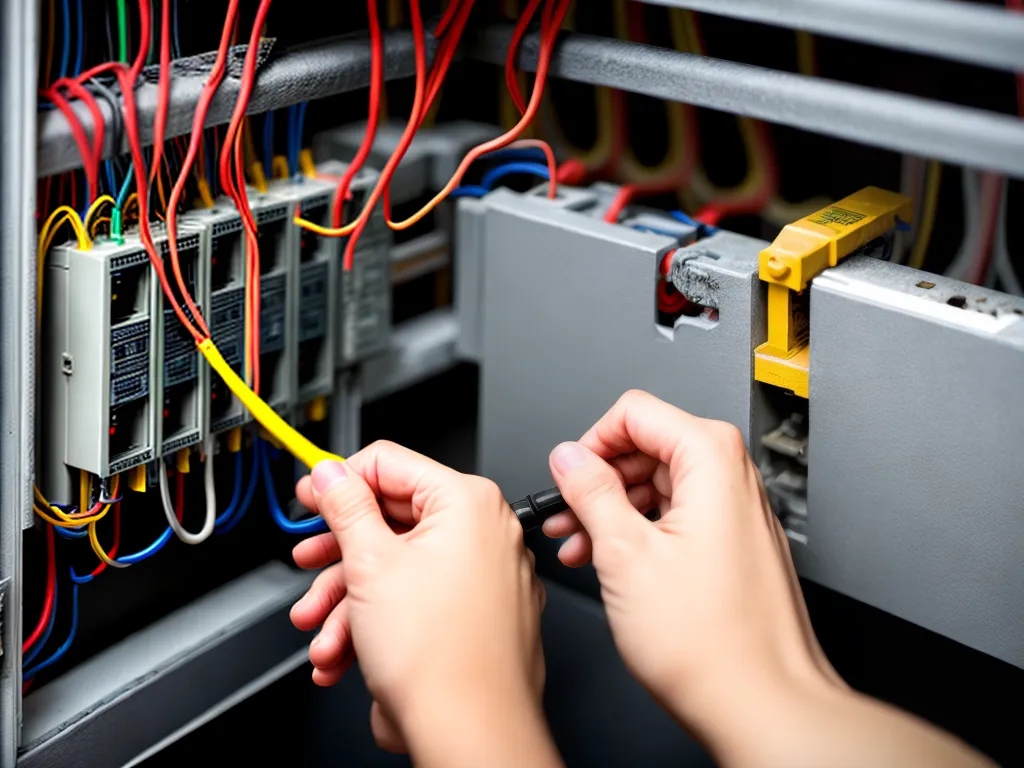
Introduction
As a homeowner, inspecting and testing your electrical panels periodically is crucial for safety and preventing potential hazards. While hiring an electrician is ideal, you can perform basic inspection and testing yourself. This comprehensive guide will walk you through the process, tools needed, and precautions for properly inspecting your electrical panels without professional help.
Safety Precautions
Before inspecting your electrical panels, take these safety precautions:
Turn Off Main Power Breaker
The most important precaution is to turn off the main breaker in your breaker box before doing any inspection or testing. This cuts power to the entire panel and prevents electric shock.
Wear Protective Gear
Wear rubber-soled shoes and insulated gloves for additional protection. Safety goggles are also recommended to protect your eyes.
Use Insulated Tools
Only use tools with insulated handles, like screwdrivers andvoltage testers. Never use metal tools which can cause shorts or shocks if they accidentally touch wiring or components.
Don't Work Alone
Have someone present in case of an emergency. They can call for help or perform basic first aid.
Turn Off Individual Breakers
Once the main breaker is off, switch individual breakers to off before inspecting those circuits. This provides an extra layer of safety when testing connections.
What to Inspect in a Breaker Panel
Conduct the following inspections on your breaker panel:
Check for Signs of Overheating
Look for discolored or burnt breakers, which indicate overheating. The wires and connections may need to be tightened. Replace breakers that are badly burnt.
Test Tightness of Wires
Wires should be firmly attached to breakers and connections inside the panel. Loose wires can cause arcing and heating. Tighten any loose screws and nuts.
Check for Leakage or Corrosion
Inspect for water or rust inside the panel box or on breakers. This can occur if water is leaking into the panel. Address leaks and replace rusted breakers.
Ensure Tidy Wire Organization
Make sure wires are neatly organized and the insulation is intact. Damage or tangled wires increase risk of shorts. Use zip ties to neatly organize wires.
Check Breakers for Cracks
Inspect breakers for any cracks or damage. Cracked breakers should be replaced immediately.
Confirm Proper Wire Sizing
Ensure the wire size matches the amperage of the circuit breaker. Overloaded wires can overheat. Undersized wires are also unsafe.
Clean Dust Buildup
Excessive dust buildup can cause components to overheat. Carefully vacuum out any significant dust accumulation inside the panel.
Testing Your Electrical Panel
In addition to inspection, testing your panel helps verify proper operation:
Use a Voltage Tester
An electrical tester lets you confirm power is off before working on circuits. Test the voltage on load wires before disconnecting them.
Check Voltage Levels
Test the voltage on load wires to ensure it matches your panel rating (usually 120 or 240 volts). Voltage outside the expected range indicates a problem.
Verify Grounding
Use a multimeter to confirm wires and parts are properly grounded. This ensures safety mechanisms work correctly.
Test Breaker Tripping
Switch breakers on and deliberately overload circuits to verify the breakers trip properly. This ensures protection against shorts or overloads.
Perform an Infrared Scan
Use an infrared camera to check for hot spots on wires and connections. This identifies points of high resistance before they fail.
Test GFCIs and AFCIs
Push the test buttons on [GFCIs](https://www.bobvila.com/articles/what-is-a-gfci-outlet/#:~:text=A%20GFCI%20outlet%20(ground%20fault,as%20little%20as%2030%20milliseconds.) and AFCIs to verify proper operation. Reset them when done.
When to Call an Electrician
While the above tasks are safe for homeowners, call a licensed electrician for:
- Major panel repairs or replacement
- Upgrading electrical service
- Installing new circuits or subpanels
- Fixing recurring tripped breakers or faults
- Diagnosing complex wiring problems
Electrical work can be dangerous if done improperly. Licensed electricians have the proper training and knowledge to safely handle complex electrical issues.
Conclusion
Inspecting and testing your electrical panels does not require professional expertise if you take proper safety precautions. Follow the guidelines here to periodically check for problems, keep things organized, verify breakers function properly, and know when to call a licensed electrician. Proper panel maintenance means electrical safety and peace of mind.